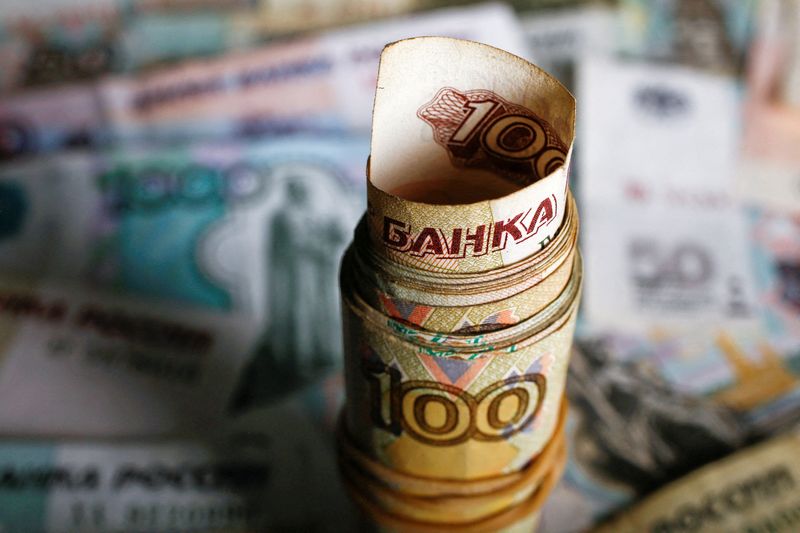Ruble fell despite growth of oil and weak dollar
2022.12.19 10:41
[ad_1]

Ruble fell despite growth of oil and weak dollar
Budrigannews.com – As a result of concerns that sanctions on Russian oil will affect the country’s export revenue, the rouble fell to its lowest point in more than seven months against the dollar on Monday and was on track for its biggest single-day drop since July.
The drop on Monday occurred as Russian President Vladimir Putin was in Belarus. This visit stoked suspicions in Kiev that Putin intends to pressure his former ally to join a new ground offensive against Ukraine.
By 15:15 GMT, the rouble had fallen to 67.41, its lowest level since May 11, 4.3% lower against the dollar.
The value of the currency against the euro decreased by 3.8% to 71.71, a level that was also lower than it had been in more than seven months. It fell to 9.64 against the yuan, its lowest level since early July.
In December, the rouble has decreased by nearly 10%. According to Yulia Melnikova, an analyst at Alfa Capital, concerns that an oil embargo and price cap will reduce Russia’s oil export revenues and increase the budget deficit as imports gradually recover are the root cause of this weakening.
Melnikova continued, “The sanctions rhetoric is also negative for the national currency.”
Last week, leaders of the European Union came to an agreement on a ninth set of sanctions against Moscow. These sanctions include excluding investment in Russia’s mining industry and adding nearly 200 more people to the blacklist.
Supported by capital controls, an initial collapse in imports as a result of Western sanctions over Russia’s actions in Ukraine, and scores of foreign companies ceasing operations in the country, the rouble is still the world’s best-performing currency this year.
Analysts anticipate that the upcoming month-end tax payments, in which exporters convert foreign currency revenue into roubles to pay for local obligations, will support the rouble. However, the currency may settle into a new, weaker range now that it has crossed the 65 threshold for the first time since May.
Dmitry Polevoy, Locko Invest’s head of investment, stated, “Our view on oil, upcoming taxes, and dividends allow us to maintain a forecast for a small rise in the near term.”
, a global benchmark for Russia’s primary export, was up 1.8 percent at $80.5 a barrel this month, but it is at its lowest level since the start of the year.
“We could see it move into the 67-70 range soon if the rouble holds above 65 (which could happen if exporters remain inactive in spite of the looming tax and dividend payments),” a note from SberCIB Investment Research stated.
More Yen is rising on statements of Bank Japan
The Russian ruble barely reacted when the central bank of Russia held its key interest rate at 7.5 percent on Friday. However, the bank’s tone slightly changed to acknowledge growing inflation risks, saying that a recent military mobilization was making it harder to find workers.
Stocks in Russia were also falling.
The dollar-denominated RTS index fell 4% to 996.9 points, a level that was lower by more than two months. At 2,132.2 points, the rouble-based MOEX Russian index remained unchanged.








